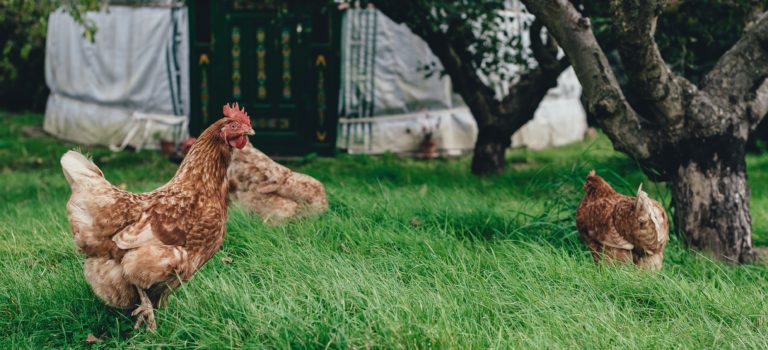Many factors affect where to build your chicken coop. These factors include sunshine and shade, wind flow, accessibility, and people-friendliness.
The location of your chicken coop is largely determined by your climate. As a general rule of thumb, place your coop facing the sun. This allows warm sunshine to stream in during the cold winter. Under or near deciduous trees will offer cooling shade during the warm summer months.
This orientation also provides prevailing west and east winds to flow freely into your coop during summer but blocks cold winds during winter.
Position your coop close enough to your house for convenience. Collecting eggs, doing coop clean-ups or just looking in on your feathered charges will be a daily activity. It should also be close to your feed storage and water and electrical sources. Essentially, place your coop at a distance not too close to your house that you get bothered by the noise and smell. It should also be as far as possible from your neighbours to forestall any future complaints.
It is also your responsibility to check with your local city hall or county government for any permits you need to make sure your chicken endeavour is in compliance with local laws and ordinances.
How to insulate your chicken coop
Instinctively, chickens will molt in preparation for winter. They will grow a new set of feathers to keep them warm and insulated. They fluff those feathers up to trap warm air against their bodies and huddle close together to share body heat.
While chickens can do well in non-insulated coops during summer or in areas with a warm climate, winter can be especially harsh on them. They may stop producing eggs if they are not kept warm, and some may even die if not properly taken care of.
One cheap method of insulation is with the use of cardboard. Attaching large sheets of cardboard along the inner side of your coop would be more than adequate. An alternative to cardboard would be old towels and blankets, although they can be used simultaneously, and you take insulation to the next level. A large panel of Styrofoam on the roof is another option. It should be noted that Styrofoam insulation should be placed out of reach of the chickens so they won’t peck away at it, or worse, accidentally ingest it.
You can also adopt the “Deep Litter” method wherein you layer pine shavings or bales of straw up to about 4 inches on the floor of the coop to minimize cold air that may come from the ground.
Proper ventilation is another key factor in insulating your coop. It is not so much as letting air in but more about letting moisture out. An accumulation of moist air in the coop during the cold months can lead to frostbitten combs and wattles.
Making sure that your chickens can roost is also vital to keep them warm as they naturally roost together and fluff their feathers to keep themselves snug. A roost that is above the ground is perfect.
How to heat your chicken coop and when to put heating on
Using heat lamps to heat chicken coops is now a thing of the past. They may be the most inexpensive method of heating but they are also the most dangerous. They not only put out 435-degree Fahrenheit temperatures, which are severely harmful to your chickens, they are also fire hazards.
Several types of great coop heaters are available in the market today. There is the flat panel chicken coop pet heater, the infrared heater for chickens and the oil-filled radiator heater. The flat panel heater looks a bit like a flat screen tv and can be fixed on any wall or left free standing in the coop. The infrared heater can be hung overhead or mounted on the sides. The oil-filled radiator heater looks like the radiator used in houses and is relatively safe and economical to use.
Whichever type of heater you would choose, it is recommended that you limit their use only during sub-zero temperatures. These heaters, however, will not heat the entire coop. They will just bring a little extra heat when the chickens curl up near them. With adequate insulation and the hardiness of chickens, too high temperatures may just cause them more harm than good.
What temperature should your chicken coop be
The recommended range of temperature for a chicken coop is 40 degrees to 80 degrees Fahrenheit. A below 32 degree temperature alone may not hurt however beware your hens do not get wet as they may get frostbite on their combs and wattles.
